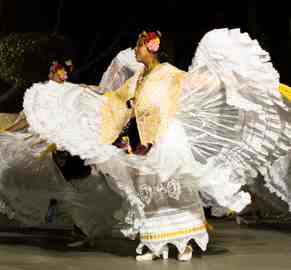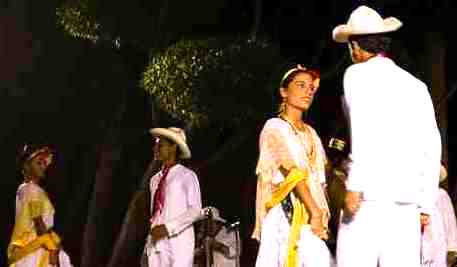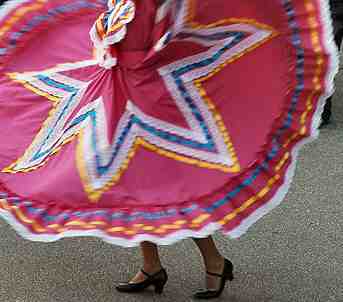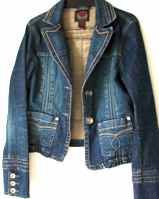|
Mexican ClothingTraditional Mexican ClothingThere is a vast range of traditional Mexican clothing, especially in relation to which state of Mexico the clothing is from. For example dresses used in Folk Ballet (Ballet Folklorico) have a full skirt in common (which flares out in the many turns of each dance, otherwise held out by the dancers themselves) come in a variety of color and embellishments. The two traditional dress styles I have seen the most of (and are easily recognizable) are the dresses of Jalisco and those of Veracruz used to dance the 'Son Jarocho'. Jalisco Folklorico dresses
Veracruz Folklorico dresses

Veracruz Folklorico menswearTraditional Dress for everyday
Puebla dressThis style of dress has become well-known among Westerners as 'the boho dress', worn by the likes of Sienna Miller. It is almost just a sack in shape, made from cotton, and embellished with intricate embroidery. They come in many colors., but white is the classic. Puebla is the name of a city in Veracruz, from where this style dress originated. Mariachi ClothingWhat has become the standard costume for mariachi musicians was originally the clothes worn by equestrian gentlemen. The workmanship seen in these clothes is often exquisite and, along with the suits of bull-fighters, the most ornamental of all Mexican clothing. These are status-driven suits, designed to show off wealth and prestige and to illicit respect and wonder whenever worn. The basic (and when I say basic, really these are anything but) pieces of a mariachi suit (traje) are described in the terms below: Terms SombreroThe infamous Mexican hat dates back to the 15th century. It gets it's name from the Spanish word for shadow/shade, sombra, it's brim being wide enough to protect you from the hot Mexican sun. With sombreros as with other Mexican clothing items, the style varies from region to region. There are many different shapes to a sombrero, and different width of the brim. I love seeing men in sombreros. It's something that hasn't been common in the West for many, many decades; although now thanks to Justin Timberlake and other high profile musicians, the hat has made a comeback. Why not go for one of the many classy styles of sombrero, and donate your ridiculous-looking stripey-straw-thing to a local drama group. It IS possible to dress up as 'a Mexican' and look classy you know.
Mexican urbanwearThey say when in Rome do as the Romans do, and if you want to have the most authentic lifestyle while in Mexico you really better dress like a Mexican. Especially in large populations like that of Mexico City, you'll be a lot safer if you look the part. What to wear One of the biggest trends on the European catwalks for 2009 - you guessed it, DENIM. And all the stone-washed detail is coming back. Basically, Mexican denim is a popular style worldwide. Return from Mexican Clothing to the Homepage
|







